Types of Personal Flotation Devices

Personal flotation devices (PFDs) go by many different names, including life jackets, life vests, flotation suits, and buoyancy aids. These devices play an important role in marine safety. Whether you’re riding on a boat or cruising on a personal watercraft, it’s vital that you use a PFD. Even the best swimmers can get caught in an undertow or riptide. If you fall overboard when you’re fully dressed, you’ll be weighed down by weight clothes and shoes, which makes swimming back to safety more difficult. If you suffer an incapacitating head injury and you’re not wearing a personal flotation device, you’re going to be in grave danger.
Here at Germaine Marine, your safety is our top priority. We’ve rounded up some essential tips on the different types of PFDs. There are five main types of life jackets, which are available in different options including inflatable, inherently buoyant, or hybrid. If you’d like more information on boat safety, be sure to give us a call or stop by our dealership. We proudly serve Arizona and Utah.
Type I PFD
Type I PFDs are buoyant devices that’ll turn the user face-up in the water. While this type of device is often bulky and uncomfortable, it is extremely reliable in rough water. However, it’s worth noting that there are currently no USCG-approved Type I PFDs available on the consumer market. In order to comply with USCG rules and regulations, you might need to consider another type of personal flotation device.
Type II PFD
If you’re looking for a more comfortable option, you might consider a Type II PFD. This personal flotation device won’t automatically turn the user face-up in the water. You’ll find this type of device is best suited for calm waters where the swimmer is being monitored and rescue response will be swift. Type II PFDs are available in both inflatable and inherently buoyant styles. In addition, they also tend to be the most affordable device.
Type III PFD
Many users will agree that Type III PFDs are the most comfortable option out there. This style is intended to provide the user with more freedom of movement in the form of buoyant clothing. Options include a jacket or vest styling that often come with additional features, such as cargo pockets and protection from hypothermia. Type III PFDs are intended for use in calm water and require the user to be able to lift their head and keep it out of the water. These devices aren’t intended to assist in long-term water survival. They are available in inflatable and inherently buoyant styles.
Type IV PFD
This type of personal flotation device is a throwable life ring, which is intended for use when passengers fall overboard. Every craft over 16’ in length is required to have a Type IV throwable life ring readily available. The ring must be kept within arm’s reach of the side of the boat rather than stowed under a seat or in a compartment. Type IV PFDs aren’t intended to be worn but only used for assisting a conscious person that has fallen overboard. They can come in a cushion style instead of a traditional ring. These shouldn’t be used by non-swimmers, unconscious people, or children.
Type V PFD
Type V PFDs cover all activity-specific flotation devices that are required to be worn in accordance with the activity for which they are intended. Some activities that have their own specific personal flotation device style include white water rafting, cold-weather hunting, and water skiing. The activity-specific PFD can also be classified as Type I, II, or II depending on the style.
PFD Guidelines
While you might think that you’re safe by just having a life jacket available, that’s not the case. These devices must be in line with US Coast Guard guidelines. There must be a PFD available for each person aboard any boat that is over 16’ in length. Each state has its own laws regarding PFD usage, so you’ll want to be sure you research this.
USCG rules will apply in cases where no law is given. In states with no specific law regarding children’s PFD use, the USCG has an interim law that mandates all children under the age of 13 must wear an inherently buoyant (not inflatable) PFD on a moving boat. These life jackets must be child-sized and must not slip up over the user’s head.
Boat safety should always come first when you’re on the water or participating in any water sports, for that matter. If you’d like to learn more or you’re in the market for a new boat, be sure to visit our dealership! We proudly serve those in Arizona and Utah.
